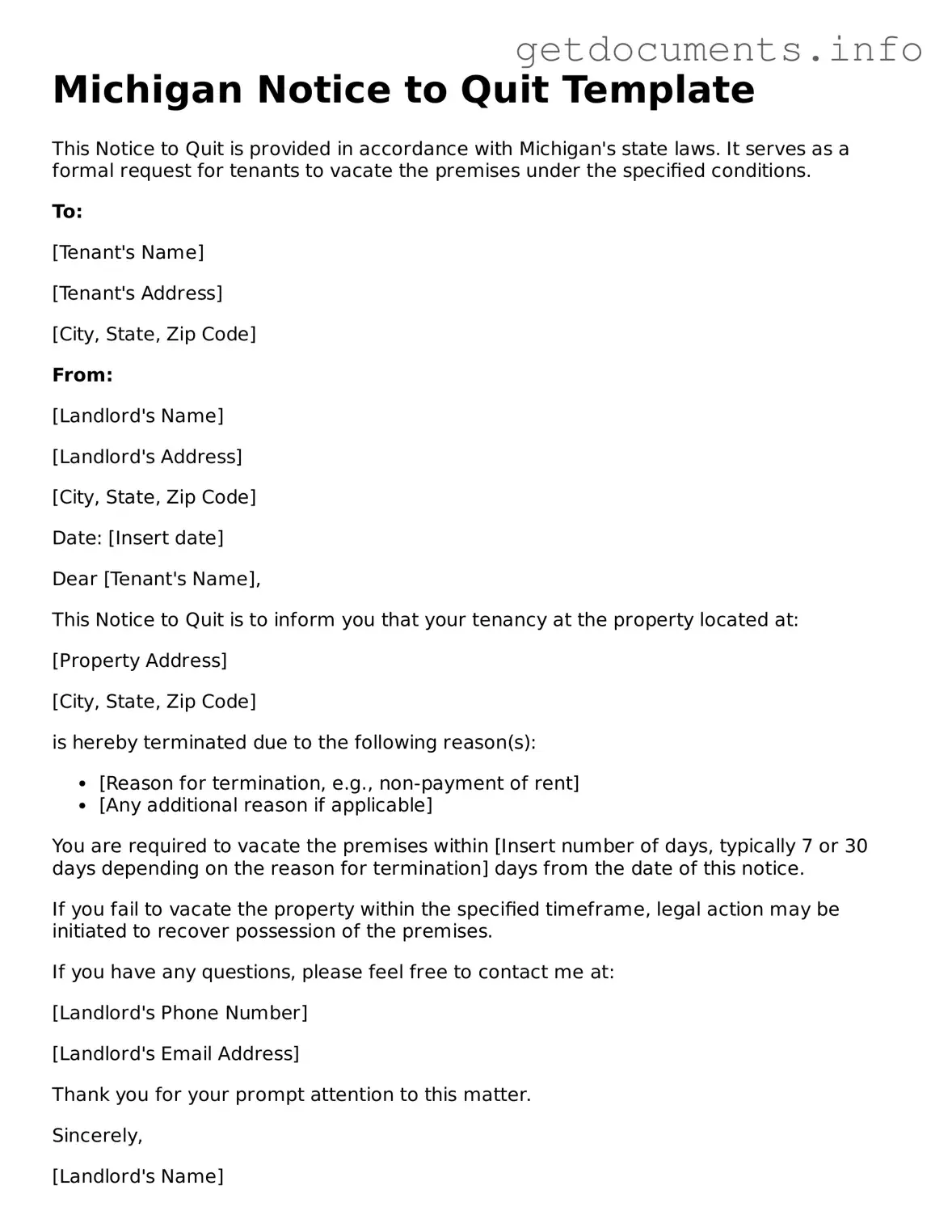- Misconception 1: The Notice to Quit is an eviction notice.
Many people believe that a Notice to Quit is the same as an eviction notice. However, it is simply a formal request for a tenant to vacate the property. An eviction process follows if the tenant does not comply.
- Misconception 2: A landlord can issue a Notice to Quit for any reason.
While landlords have the right to terminate a lease, they cannot issue a Notice to Quit arbitrarily. Valid reasons must exist, such as non-payment of rent or lease violations.
- Misconception 3: The Notice to Quit must be delivered in person.
Some believe that personal delivery is the only way to serve a Notice to Quit. In Michigan, it can also be mailed or posted on the property, depending on the circumstances.
- Misconception 4: A tenant has unlimited time to respond to a Notice to Quit.
Tenants typically have a limited timeframe to respond or vacate the property, which is often specified in the notice itself. Ignoring the notice can lead to further legal action.
- Misconception 5: A Notice to Quit can be issued without prior communication.
Landlords are encouraged to communicate with tenants about issues before issuing a Notice to Quit. This can help resolve problems amicably and avoid unnecessary legal steps.
- Misconception 6: A Notice to Quit is not required in all situations.
In certain cases, such as lease expiration, a Notice to Quit may not be necessary. However, it is often a good practice to provide one to avoid misunderstandings.
- Misconception 7: A Notice to Quit can be handwritten.
While a handwritten notice may be valid, it is generally advisable to use a standardized form to ensure all necessary information is included and to maintain professionalism.
- Misconception 8: Tenants can ignore a Notice to Quit without consequences.
Ignoring a Notice to Quit can lead to eviction proceedings. It is important for tenants to take the notice seriously and respond appropriately.
- Misconception 9: A Notice to Quit affects a tenant's credit score.
A Notice to Quit itself does not directly impact a tenant's credit score. However, if it leads to eviction, that eviction record may affect future rental applications and creditworthiness.
- Misconception 10: The Notice to Quit is the final step in the eviction process.
The Notice to Quit is just the beginning of the eviction process. If the tenant does not leave, the landlord must file for eviction in court to remove the tenant legally.
